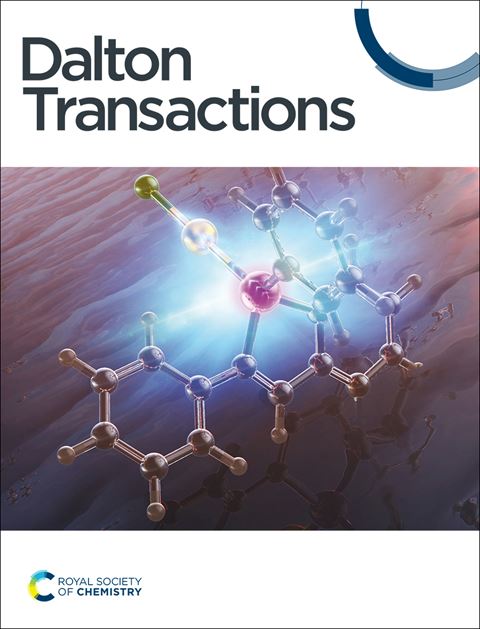三维Co2CrO4@Cr-NiFe LDH/CF纳米片阵列的异质结构和原子掺杂工程用于高效电催化析氧
IF 3.5
3区 化学
Q2 CHEMISTRY, INORGANIC & NUCLEAR
引用次数: 0
摘要
析氧反应(OER)通常被认为是电化学水分解的主要障碍,主要是因为它的动力学缓慢。为OER开发一种有效和持久的催化剂对于克服这一挑战是必不可少的。在本研究中,通过在泡沫铜(Co2CrO4/CF)上生长的Co2CrO4纳米片阵列上沉积掺杂cr的双氢氧化物(Cr-NiFe LDH),获得了具有独特异质结构的三维纳米材料(Co2CrO4@Cr-NiFe LDH/CF)。尤其值得注意的是,该催化剂在过电位257 mV时电流密度为100 mA cm−2,过电位300 mV时转换频率(TOF)高达10.21 s−1,Tafel斜率仅为72 mV dec−1。这表明Co2CrO4@Cr-NiFe LDH/CF具有出色的催化效率。此外,该催化剂在100 mA cm−2的电流密度下表现出40小时的稳定性。该研究为OER催化剂的优化设计提供了一种创新的方法,为可再生能源领域的研究提供了重要的参考。本文章由计算机程序翻译,如有差异,请以英文原文为准。

Heterostructure and atomic doping engineering in 3D Co2CrO4@Cr-NiFe LDH/CF nanosheet arrays for efficient electrocatalytic oxygen evolution
The oxygen evolution reaction (OER) is usually considered a major obstacle to electrochemical water splitting, primarily because of its sluggish kinetics. Developing an effective and durable catalyst for the OER is indispensable for overcoming this challenge. In this study, a three-dimensional nanomaterial with a unique heterostructure (Co2CrO4@Cr-NiFe LDH/CF) was obtained by the deposition of Cr-doped double hydroxide (Cr-NiFe LDH) on Co2CrO4 nanosheet arrays grown on copper foam (Co2CrO4/CF). In particular, the catalyst had a current density of 100 mA cm−2 at a low overpotential of just 257 mV, a high turnover frequency (TOF) of 10.21 s−1 at an overpotential of 300 mV and a Tafel slope of merely 72 mV dec−1. This indicated that Co2CrO4@Cr-NiFe LDH/CF exhibited outstanding catalytic efficiency. Moreover, the catalyst exhibited stability for a duration of 40 h at a current density of 100 mA cm−2. The study introduces an innovative approach for the superior design of an OER catalyst and offers a significant reference for investigation within the realm of renewable energy.
求助全文
通过发布文献求助,成功后即可免费获取论文全文。
去求助
来源期刊

Dalton Transactions
化学-无机化学与核化学
CiteScore
6.60
自引率
7.50%
发文量
1832
审稿时长
1.5 months
期刊介绍:
Dalton Transactions is a journal for all areas of inorganic chemistry, which encompasses the organometallic, bioinorganic and materials chemistry of the elements, with applications including synthesis, catalysis, energy conversion/storage, electrical devices and medicine. Dalton Transactions welcomes high-quality, original submissions in all of these areas and more, where the advancement of knowledge in inorganic chemistry is significant.
 求助内容:
求助内容: 应助结果提醒方式:
应助结果提醒方式:


